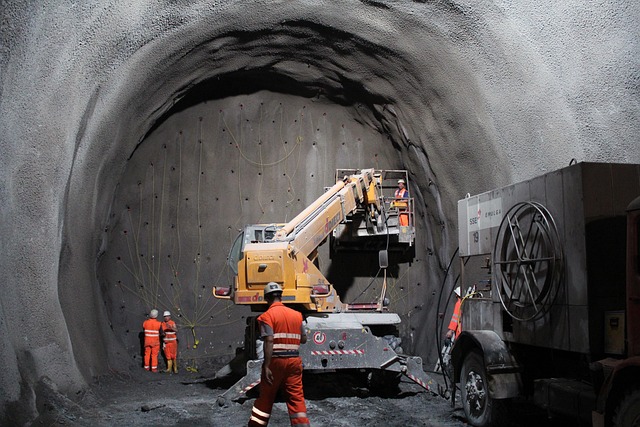In construction, identifying hidden underground utilities is a significant challenge, leading to safety hazards and costly delays. Accurate Utility Location Services (AULS), leveraging GPS, radar, and ground-penetrating radar, have emerged as a game-changer. These services provide precise utility mapping, reducing damage risk and streamlining operations through real-time data integration into digital blueprints. By minimizing infrastructure disruptions and ensuring worker safety, AULS enhance project efficiency while prioritizing accuracy and integrity in utility location data.
In today’s digital era, enhancing site safety is paramount, yet hidden dangers often lurk beneath the surface. Traditional site safety methods struggle to keep pace with complex infrastructure, leading to potential risks and inefficiencies. This article explores a game-changer: accurate utility location services and precise utility mapping. We delve into how these technologies transform site safety, streamline operations, and prevent costly mistakes, ultimately ensuring seamless project execution and public safety.
The Challenges of Traditional Site Safety: Uncovering Hidden Dangers
In the traditional approach to site safety, one of the primary challenges lies in identifying and mitigating hidden dangers within construction sites or other work areas. Without accurate utility location services, workers and contractors often face significant risks due to unknown underground utilities. This lack of awareness can lead to accidental damage or disruption of critical infrastructure, causing costly delays and potential safety hazards.
Manually locating and mapping utilities can be a tedious, time-consuming process prone to human error. Traditional methods often rely on visual inspections, stakeholder memories, and paper records, which may not reflect real-time changes in the site’s utility layout. As projects evolve, so do their utility systems, making it essential to have precise, up-to-date information to ensure worker safety and avoid significant project setbacks.
Introducing Accurate Utility Location Services: A Game-Changer
In today’s digital era, enhancing site safety through precise utility mapping has become a game-changer in construction and infrastructure development. Introducing Accurate Utility Location Services (AULS) revolutionizes traditional methods by providing real-time, detailed information about underground utilities. This technology is a testament to how innovation can transform sectors, ensuring safer and more efficient operations.
AULS employs advanced techniques such as GPS, radar, and ground-penetrating radar to locate and map various utility lines including water, gas, electricity, and telecommunications cables. By integrating this data into digital blueprints, construction teams gain a comprehensive view of the underground landscape before they begin digging. This proactive approach significantly reduces the risk of damage to critical infrastructure, preventing costly accidents and disruptions.
How Precision Mapping Enhances Safety and Streamlines Operations
Precision mapping, powered by advanced technology like GPS and aerial imagery, significantly enhances site safety by providing accurate utility location services. This method offers a detailed, digital representation of underground utilities, allowing construction teams to accurately plan and execute projects without striking critical infrastructure. By identifying pipe lines, cables, and other utilities in advance, potential risks are minimized, reducing the chances of costly damage and safety hazards.
Moreover, precise mapping streamlines operations by providing real-time data that aids in efficient project management. This information enables better resource allocation, faster troubleshooting in case of utility disruptions, and improved overall coordination among various stakeholders involved in a construction site. Ultimately, it contributes to project completion within timelines and budgets, while prioritizing safety as the top priority.
Benefits and Best Practices for Implementing Advanced Utility Mapping Technologies
Implementing advanced utility mapping technologies offers significant benefits for enhancing site safety and efficiency. By leveraging accurate utility location services, construction and maintenance teams can significantly reduce the risk of damaging underground utilities during excavation projects. This minimizes disruptions to critical infrastructure, prevents costly repairs, and ensures the safety of workers.
Best practices for adopting these technologies include utilizing real-time data updates, integrating multiple mapping layers, and promoting ongoing training for staff involved in site planning and management. Additionally, collaboration with local utility providers can facilitate access to precise maps and information, enhancing the accuracy and reliability of the mapping system. Regular audits and quality control measures are essential to maintain the integrity of the data, ensuring that all stakeholders have confidence in the accurate utility location services provided.
Precision utility mapping technologies, including advanced GPS tracking and 3D modeling, offer a transformative solution to the challenges of traditional site safety. By providing accurate utility location services, these tools empower construction teams to navigate complex sites with enhanced awareness, minimizing the risk of damage to vital underground infrastructure. This not only streamlines operations but also ensures the safety of workers, ultimately fostering a more efficient and secure building environment. Implementing best practices for these advanced mapping technologies is key to unlocking their full potential in today’s digital era.
